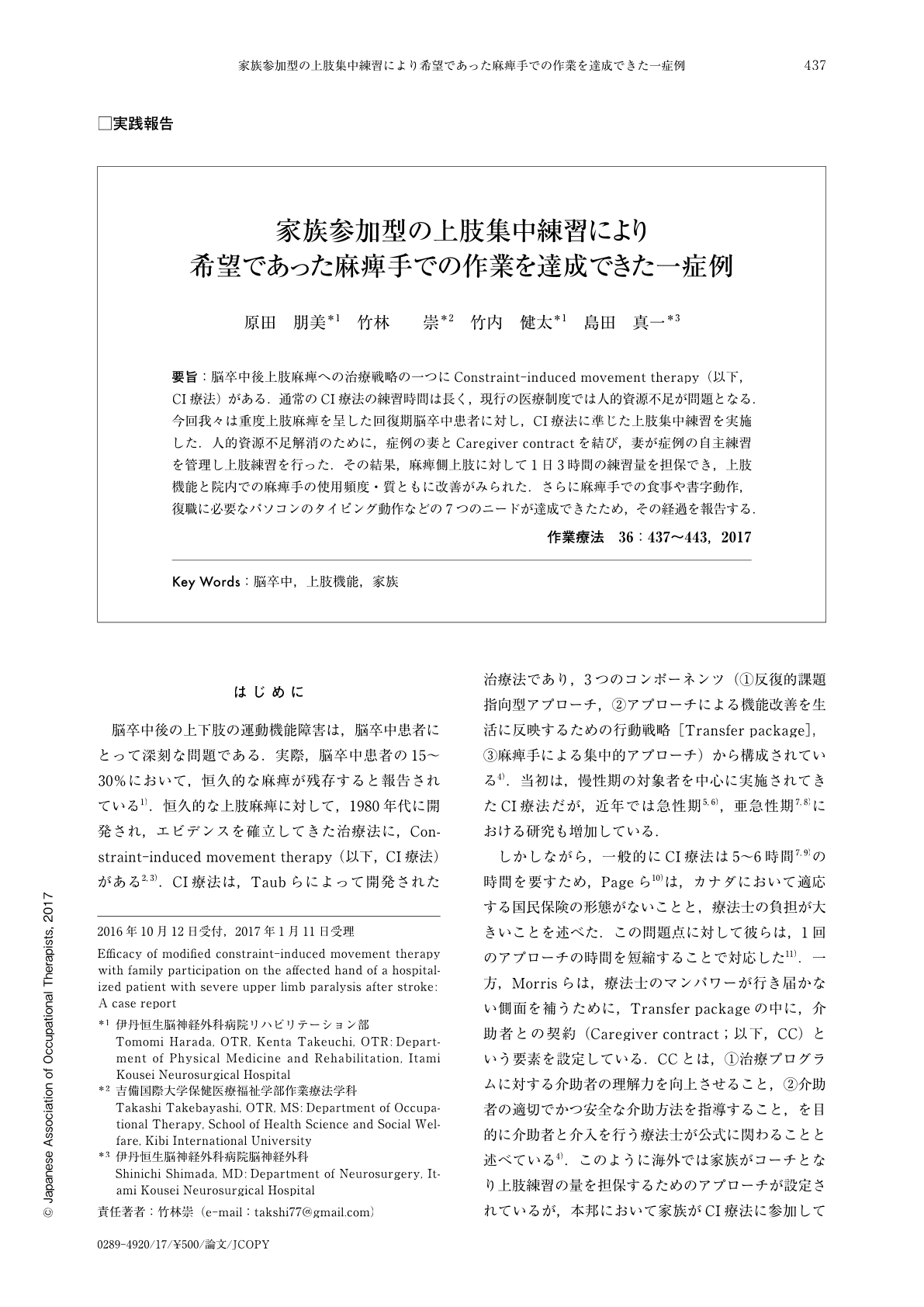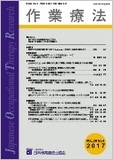Japanese
English
- 販売していません
- Abstract 文献概要
- 1ページ目 Look Inside
- 参考文献 Reference
- サイト内被引用 Cited by
要旨:脳卒中後上肢麻痺への治療戦略の一つにConstraint-induced movement therapy(以下,CI療法)がある.通常のCI療法の練習時間は長く,現行の医療制度では人的資源不足が問題となる.今回我々は重度上肢麻痺を呈した回復期脳卒中患者に対し,CI療法に準じた上肢集中練習を実施した.人的資源不足解消のために,症例の妻とCaregiver contractを結び,妻が症例の自主練習を管理し上肢練習を行った.その結果,麻痺側上肢に対して1日3時間の練習量を担保でき,上肢機能と院内での麻痺手の使用頻度・質ともに改善がみられた.さらに麻痺手での食事や書字動作,復職に必要なパソコンのタイピング動作などの7つのニードが達成できたため,その経過を報告する.
Constraint-induced movement therapy (CIMT) is a treatment for upper extremity motor dysfunction after stroke. Some medical clinics may not have the human resources to administer CIMT in the Japanese medical insurance system because of the prohibitively long hours of CIMT. We provided modified CIMT for a hospitalized patient with severe upper limb paralysis after stroke at a convalescent rehabilitation ward. In order to solve the problem of the lack of human resources, we signed a caregiver contract with the patient's wife who managed his self-exercise. As a result, we could provide therapy to the amount of 3 hours/day for the affected arm, resulting in improvements in arm function and amount of use, and quality of hand performance in daily activities. Furthermore, the patient achieved seven needs, including having a meal by affected hand, writing by affected hand and using a computer to prepare for the return to work.

Copyright © 2017, Japanese Association of Occupational Therapists. All rights reserved.


